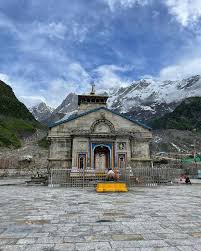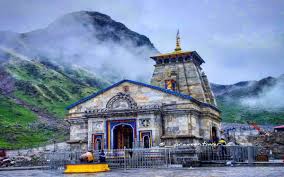Nestled high in the Garhwal Himalayas, Kedarnath is not only a destination of spiritual reverence but also a place that mirrors the resilience and devotion exemplified by Indian legends. Among the many stories that breathe life into Kedarnath, the journey of a legendary Indian figure adds a unique perspective to the allure of this sacred site.
A Sacred Pilgrimage
Kedarnath is renowned for its ancient temple dedicated to Lord Shiva. This temple, perched at an altitude of approximately 3,583 meters (11,755 feet) above sea level, is part of the Char Dham pilgrimage circuit, which also includes Yamunotri, Gangotri, and Badrinath. For centuries, it has been a pilgrimage site for devotees seeking blessings and spiritual solace.
One inspiring figure who embodies the spirit of Kedarnath is the revered sage and scholar, Swami Vivekananda. His visits to various sacred sites in India were driven by a deep spiritual quest, and his writings reflect a profound understanding of the divine presence in these hallowed places. Swami Vivekananda’s journey to the Himalayas, including places like Kedarnath, is a testament to his belief in the transformative power of spirituality and nature.
Natural Splendor
Kedarnath is not just a spiritual haven; it’s also a paradise for nature lovers. Surrounded by snow-capped peaks, lush green valleys, and the tranquil Mandakini River, the area is a visual feast. The breathtaking landscapes of Kedarnath echo the natural beauty described in the writings of Indian poets and philosophers.
The high-altitude meadows and surrounding forests are home to diverse flora and fauna, providing ample opportunities for trekking and wildlife observation. Inspired by the nature-loving ethos of figures like Rabindranath Tagore, who found solace and inspiration in the natural world, visitors to Kedarnath can experience a profound connection with the environment.
Cultural and Spiritual Experience
The spiritual ambiance of Kedarnath is reminiscent of the devotion expressed by great Indian sages and scholars. The temple, believed to have been established by the Pandavas of the Mahabharata, is considered one of the twelve Jyotirlingas. The spiritual significance of Kedarnath is further highlighted by its association with the teachings and experiences of revered figures like Swami Vivekananda, who emphasized the importance of pilgrimage and spiritual quests.
In addition to the temple, Kedarnath offers a glimpse into the cultural tapestry of the region. The local Garhwali and Tibetan influences are evident in the food, crafts, and traditions of the area. For instance, traditional Tibetan dishes such as momos and thukpa are a staple in the region, reflecting the multicultural influences that have shaped Kedarnath’s unique character.
Preparation and Tips
Planning a visit to Kedarnath requires careful preparation, much like the meticulous approach taken by Swami Vivekananda during his travels. The trek to Kedarnath involves challenging terrain and unpredictable weather conditions. It’s essential to pack appropriate clothing, including warm layers, and to be prepared for sudden weather changes. Physical fitness is also important, as the trek involves steep climbs and varying altitudes.
Checking local travel advisories and planning your trip according to seasonal conditions will ensure a safer and more enjoyable experience. The journey to Kedarnath, while demanding, is ultimately a rewarding one, offering both spiritual fulfillment and natural beauty.
Conclusion
Kedarnath is a destination that resonates deeply with those who seek both spiritual growth and an appreciation of nature’s grandeur. Inspired by the journeys and teachings of Indian legends like Swami Vivekananda, a visit to Kedarnath becomes more than just a pilgrimage; it becomes a personal journey of discovery and connection. Whether drawn by the sacred temple, the breathtaking landscapes, or the rich cultural heritage, Kedarnath offers an experience that is both profoundly spiritual and remarkably enriching.






